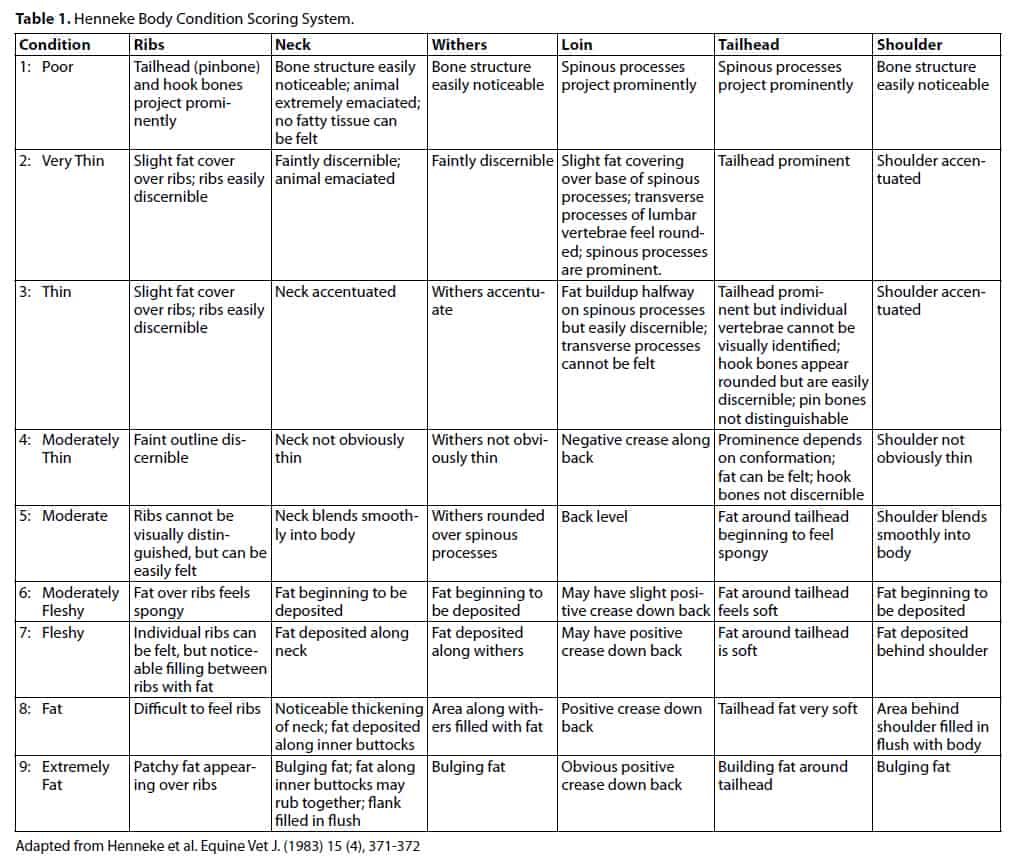Body Condition Scoring Horses: Step-by-Step
- Topics: Basic Care, Body Condition, Horse Care, Nutrition, Nutrition Basics

By Fernanda Camargo, DVM, PhD; Laurie Lawrence, PhD; and Bob Coleman, MS, PhD, PAS, of the University of Kentucky Department of Animal and Food Sciences
As we understand more about the impact that obesity and emaciation have on animal health, it is imperative that we strive to keep our horses at an optimum body condition. Since 1983, a procedure developed by Don Henneke, PhD, has served to provide a standard body condition scoring system that can be used across breeds and by all horse people. The system assigns a numerical score—1 through 9—based on the amount of fat that has accumulated in the important areas used to assess horses’ body condition.
The Body Condition Scoring System
The Henneke system assesses accumulated fat both visually and by palpation in each of six areas: ribs, behind the shoulder, withers, loin, tailhead, and neck. A numerical value is assigned based on the fat accumulated in all six areas (Table 1).

Create a free account with TheHorse.com to view this content.
TheHorse.com is home to thousands of free articles about horse health care. In order to access some of our exclusive free content, you must be signed into TheHorse.com.
Start your free account today!
Already have an account?
and continue reading.
Written by:
University of Kentucky College of Agriculture, Food and Environment
Related Articles
Stay on top of the most recent Horse Health news with















